#thisisnotlatinx
Explore tagged Tumblr posts
Text
DCTheatre & Latin American Heritage Month
In 1968, Felix Longoria, a Chicano, was killed in action in the Philippines during WWII. When his body was returned home to Three Rivers, TX, local racists insisted he be buried on the “Mexican side” of the cemetery. The disrespect of the National Hero’s body and ancestry, gained national attention, and Private Felix Z. Longoria was buried at the Arlington National Cemetery, making him the first fallen soldier of Mexican-descent to be interred there. President Lyndon Johnson observed Hispanic Heritage Week for the first time in 1968, and on August 17, 1988, President Ronald Reagan enacted Hispanic Heritage Month into law. Ethnic and racial tensions in Three Rivers continue to this day, and the confusion as to what a Hispanic or a Latino/a/x is continues as well.
youtube
(Video: Independent Lens, THE LONGORIA AFFAIR, Video Extra, PBS)
HispanicHertiageMonth.Org says on their website, “Many Hispanic Americans trace their roots to the cultures of the indigenous peoples of the Americas – including the Arawaks (Puerto Rico), the Aztecs [exonym] (Mexico), the Incas (South America), the Maya (Central America), and the Tainos (in Cuba, Puerto Rico and other places). Some trace their roots to the Spanish explorers – who in the 1400s set out to find an easier and less costly way to trade with the Indies. Other Latinos trace their roots to the Africans who were brought as slaves to the New World”. Though there is varying opinion on what the name of the celebration should be (Hispanic Heritage Month vs. Latin American Heritage Month), the celebration remains the same: every year on September 15 through October 15, the United States of America celebrates the histories of Latin America including independence from Spain, and the accomplishments of Latin Americans who helped shape the United States into the nation it is today. Some argue that “Hispanic Heritage Month” praises the Hispanic colonizers, and that “Latin American Heritage Month” would be a better name as it encompasses all Latin Americans (the Indigenous, the African, the Asian, and the European) regardless of their racial background. For the purposes of this blog post, the acronym LAHM (Latin American Heritage Month) will be used to honor the descendants of the Indigenous people of the American and African continents that have been affected by the colonization.
Collectively, in the DC Metropolitan Area, the Latina/o/x and Latin American population is between 9 and 14%, depending on the study. LAHM is a perfect time for DC Theatre to feature their Latinx (a gender-neutral term for Latino and Latina that embraces gender non-conforming people of Latin American background) playwrights, directors, designers, actors, and technicians. The Women’s Voices Theatre Festival is also running during LAHM; a perfect opportunity to feature Latina Playwrights- something Arena Stage and Pointless Theatre Company must have considered when planning their season. Between September 15 and October 15, theatreWashington has tracked 62 productionsthat will be playing. From these productions, 7 playwrights, 4 directors, 4 costume designers, 1 light designer, 2 composers, 2 sound designers, 3 music directors, 5 set designers, 2 puppet designers, 2 projections/media designer, 1 other designer, 1 panelist, and 27 actors of Latin American or Hispanic heritage will be featured.
I want to take the time to celebrate these artists. If I mention you in this post and you wish to not be named or if I misidentified your ancestral nation of origin, please let me know and I will kindly remove you from the list or edit your profile. I will say it took me a while to find out where all these artists are from, and some I couldn’t find, but all of this came from a place of love. For the most part, I did not mention any of these Latinx artists’ racial background, because I do not decide what race these folks are, only they and their family history can do that. Amo a todxs mis artistas Latinoamericanxs. ¡Que viva América!
There were three companies who deserve special commendation because of their commitment to the inclusion of Latinx and Hispanic Artists during LAHM: Arena Stage, GALA Hispanic Theatre, and Pointless Theatre Company. Though these three companies produced completely different shows in so many ways, they are providing US Theatre the diversity and inclusion it needs.
This first show, I have not seen, but they have given 17 jobs to Latinx and Hispanic artists. Arena Stage features playwright Karen Zacarias’ (Mexican-descent) telenovela-style comedy DESTINY OF DESIRES, running until October 18, directed by Jose Luis Valenzuela (Mexican-descent). There are 4 Latinx or Hispanic creative team members including: light design by Pablo Santiago (Mexican-descent), Composer Rosino Serrano (Spanish-descent), sound design by John Zalewski (Brazilian-descent), and set design by Francois-Pierre Couture (Quebecan-descent); and there are 11 Latinx or Spanish actors: Esperanza America (Mexican-descent), Oscar Ceville (Panamanian-descent), Gabriela Fernandez-Coffey (?-descent), Carlos Gomez (Cuban-descent), Fidel Gomez (Mexican-descent), Rayanne Gonzales (?-descent), Castulo Guerra (Argentine-descent), Marian Licha (Puerto Rican-descent), Nicholas Rodriguez (Mexican-descent), Elia Saldana (Mexican-descent), and Rosino Serrano (Spanish-descent). That’s a lot of Latinx and Hispanic Artists! It’s so amazing that this show is existing in my theatre community! My only concern is that it is not accessible to Latinx audiences. This is Arena Stage after all, and the ticket prices are higher. With $40 for a low priced seat, it may be too expensive for some Latinx families to make the trip to watch DESTINY OF DESIRES. I have seen some coupons going around, so maybe they found their way to some Latinx folks who needed them. My hope it to watch the show before it closes so I can experience the majesty that is DC Latinx Theatre!
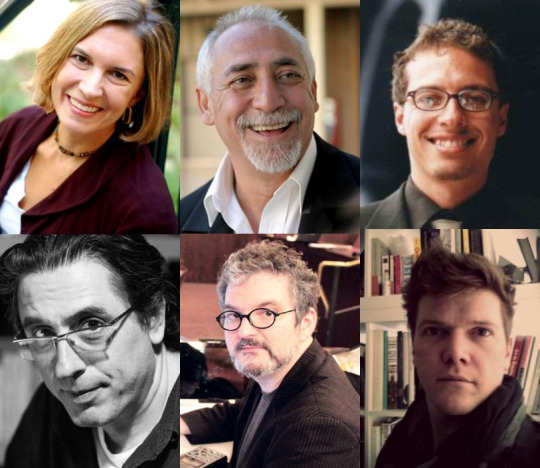
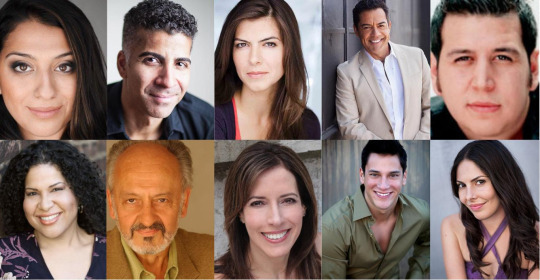
(Latinx Artists from Arena Stage’s DESTINY OF DESIRES: Karen Zacarias, Jose Luis Valenzuela, Pablo Santiago, Rosino Serrano, John Zalewski, Francois-Pierre Couture, Esperanza America, Oscar Ceville, Gabriela Fernandez-Coffey, Carlos Gomez, Fidel Gomez, Rayanne Gonzales, Castulo Guerra, Marian Licha, Nicholas Rodriguez, and Elia Saldana.)
[[I would like to extend a special thanks to a non-Latina, Molly Smith- Artistic Director of Arena Stage and one of the Founders of the Women’s Voice Theatre Festival- who took the time to celebrate the Latina playwright during Latin American Hertiage Month. She did not have to do that… most Artistic Directors didn’t. But she had faith in Karen Zacarias and in Latinx Theatre. And now this show is Helen Hayes Recommended, which will surely produce a lot of first time Latinx nominees and winners at the next Helen Hayes Awards. I can’t wait to see that!!!]]
The next show I did see. This show’s existence in DC theatre was so important, though it’s placement during LAHM was kind of off putting to many Latinx artists I’ve spoken to. GALA Hispanic Theatre featured an adaptation of Federico Garcia Lorca’s (Spanish-descent) YERMA, by playwright Fernando J. Lopez (Spanish-descent), directed by Jose Luis Arellano (Spanish-descent). There were 5 Spanish-descent Creative Team members including: costume design by Silvia de Marta, set design by Silvia de Marta, Composer Mariano Marin, sound design by Mariano Marin, and projections/media design by Alvaro Luna; and 5 Spanish or Latinx Actors: Mabel del Pozo (Spanish-descent), Iker Lastra (Spanish-descent), Eric Robledo (Mexican-descent), Luz Nicolas (Spanish-descent), and Natalia Miranda-Guzman (Chilean-descent). The off putting-ness comes in that GALA Hispanic Theatre is celebrating Spanish Heritage rather than Latin American heritage during LAHM by producing a play by a Spanish playwright rather than a Latin American playwright. However, when taken out of that context, it is so important that GALA is producing work by a non-Anglo playwright during LAHM. It’s so important that GALA is providing opportunities to migrant workers and local Latinx and Spanish artists. It’s so important that GALA is unapologetically doing a show in Spanish during LAHM. More companies should be doing shows in Spanish… especially during LAHM. Though GALA’s ticket prices aren’t as high as Arena Stage’s, they are still rather expensive for Latinx folks who may be struggling to pay the rent, but who would appreciate hearing a story in a language they can fully understand and appreciate. This show, another Helen Hayes Recommended production, was beautiful, creative, and really intense. Very much like everything else GALA Hispanic Theatre does. Though Lorca might not have been the best way to celebrate LAHM, his presence in DC Theatre was incredibly appreciated… This play has actually inspired me to look into the writing of another poet: Nezahualcoyotl, a Tezcoco leader who was known for his poetry. Lorca, though not a Latin American, has inspired a Latin American to further the Latin American Theatre…. which to me is such a beautiful and needed thing.
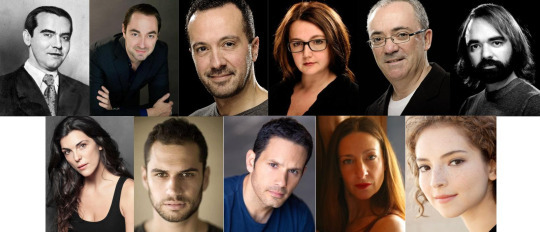
(Latinx/Hispanic Artists from YERMA: Federico Garcia Lorca, Fernando J. Lopez, Jose Luis Arellano, Silvia de Marta, Mariano Marin, Alvaro Luna, Mabel del Pozo, Iker Lastra, Eric Robledo, Luz Nicolas, and Natalia Miranda-Guzman)
The next show actually hasn’t opened yet, but I am so excited for it! Pointless Theatre features playwrights Mel Bieler (Brazilian-descent) and Patti Kalil (Brazilian-descent)’s GIMMIE A BAND, GIMMIE A BANANA: THE CARMEN MIRANDA STORY, directed by Roberta Alves (Brazilian-descent). There are 5 Brazilian-descent Creative Team members including: Music Direction by Patricia Vergara, set design by Mel Bieler and Patti Kalil, and puppet design by Mel Bieler and Patti Kalil; and 3 Latinx actors: Sharalys Silva (Puerto Rican-descent), Belen Oyola-Rebaza (Peruvian-descent), and Philip da Costa (Brazilian-descent). This story is about Carmen Miranda, a controversial Latin American icon who is quite possibly the mother of the Latina Bombshell stereotype in the US, but is known abroad as someone who appropriated Afro-Bahia women’s clothing and style of music (something that to white Brazilians was seen as distasteful to the white image Brazil intended to show abroad.). It’s fascinating to see that Afro-Latina actor Sharalys Silva will be playing Carmen Miranda, and that the play features other Latinx artists of color. To me, it is reminiscent to what is being done with Hamilton on Broadway, where artists of color are playing famous white folks; likewise Latinx artists of color are playing famous White Brazilians. Having a Black woman reclaim Miranda’s iconography for the community is a beautiful message I take from it. I’m very excited to see this show… plus puppets! So yeah, I’m definitely catching this show! And so should you! Tickets are only $20-$25 and I’m sure there are coupons rolling around!
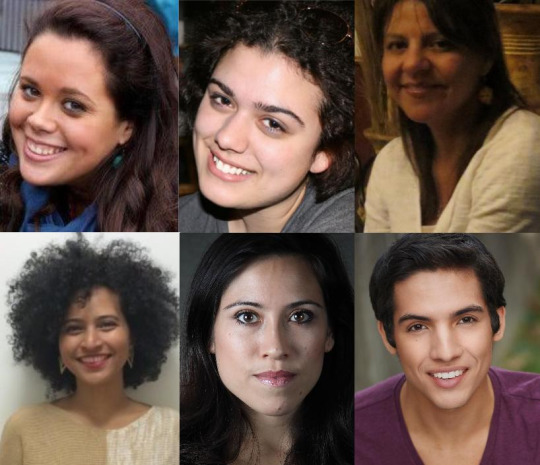
(Latinx Artists from GIMMIE A BAND, GIMMIE A BANANA: THE CARMEN MIRANDA STORY: Mel Bieler, Patti Kalil, Patricia Vergara,Sharalys Silva, Belen Oyola-Rebaza, and Philip da Costa. Picture Not Found: Roberta Alves.)
The In Series’ LATINA SUPREMES featured Music Directors Mari Paz (Cuban-descent) and Diana Saez (Puerto Rican-descent), as well as Actors Patricia Portillo (Mexican-descent), Mari Paz (Cuban-descent) and Diana Saez (Puerto Rican-descent). I was not able to watch this show sadly, but the cabaret-style aspect of the show intrigued me. I love diversity in theatre style. I was a bit confused by the “Supremes” part of the title of the show, considering there was a mix of Latina women songwriters that were slated to be featured. I imagined that, much like their namesake, the “Latina Supremes” would be Black women. I imagined La Lupe, Sheiela E., Celia Cruz, and Susan Baca. Mariah Carey, Kelis, Esperanza Spalding, and Sabi. AFRO-Latinas. But that’s just what I imagine when I hear the word Supremes. The result, I’m sure, was beautiful. I really wish I would have had the chance to see it. (Did anyone I know catch this show?)
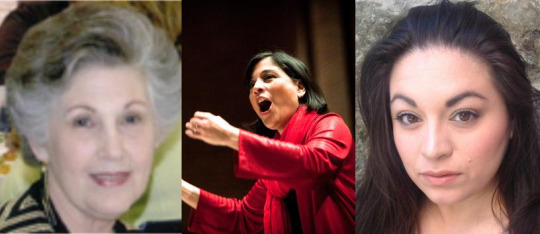
(Latinx Artists from LATINA SUPREMES: Mari Paz, Diana Saez, and Patricia Portillo.)
The next show, I sadly missed, is Theatre J’s QUEEN GIRL IN THE WORLD. This show featured 4 Latina Creative Team members including: costume design by Ivania Stack (Costa Rican-descent), projections/media design by Ruthmarie Tenorio (Mexican-descent), set design by Ruthmarie Tenorio (Mexican-descent), and other designs by Paige Hernandez (Cuban-descent). I think it is awesome that this non-Latinx play provided 3 Latinas work for LAHM and the Women’s Voices Theatre Festival. More companies should have done that! Even if you can’t produce a Latinx playwright, you should still hire Latinx artists… especially to feature during LAHM. It’s no surprise that it is Theatre J who provided these jobs. They do awesome show by diverse artists all time and have provided many opportunities to diverse artists.
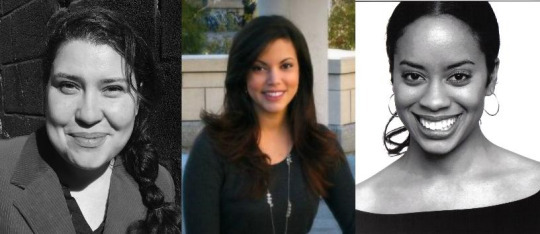
(Latinx Artists from QUEEN GIRL IN THE WORLD : Ivania Stack, Ruthmarie Tenorio, and Paige Hernandez)
I haven’t caught this next show, but I still have time- it runs until November 1st! Olney Theatre Center’s BAD DOG features 3 Latinx artists: costumes design by Ivania Stack (Costa Rican-descent); and two actors Gladys Rodriguez (Puerto Rican-descent), and Carlos Saldaña (?-descent). This show doesn’t have Latinx themes but it’s great that these Latinx artists were able to be featured this month.
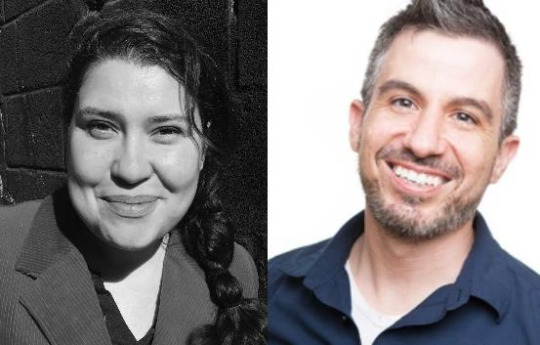
(Latinx Artists from BAD DOG: Ivania Stack, and Carlos Saldaña. Picture Not Found: Gladys Rodriguez)
Admittedly I haven’t caught most shows, but that’s just cuz theatre is expensive. I tend to just go to free or PWYC events, unless ticket prices are reasonable. This next play, I missed specifically because it is so far from where I live, however, these artists should still be recognized. Red Branch Theater Company’s DOGFIGHT featured 2 Latinx actors: Javier del Pilar (Puerto Rican-descent) and Daniel Rodriguez (Honduran-descent). I hope the show went great! I saw Javier del Pilar in Spring Awakening, and they were amazing! I hope to see more from both of these Latinx artists in the future!
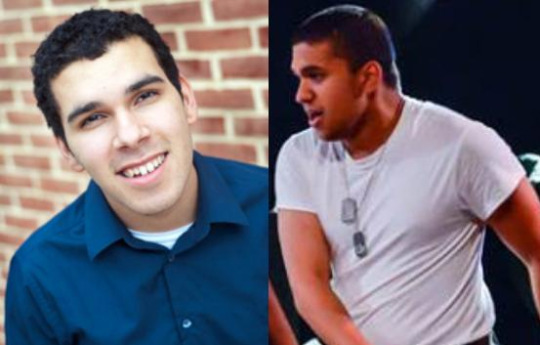
(Latinx Artists from DOGFIGHT: Javier del Pilar and Daniel Rodriguez.)
I missed this next free event at The Kennedy Center Theatre Lab for reasons I’m still beating myself up about. It was a reading of Lisa Loomer’s (Spanish-descent) ROE. I absolutely love Lisa Loomer and was so excited to see that The Kennedy Center Theatre Lab was doing a reading of one of her shows. From just reading a description of her play, I know it was probably an amazing evening. More companies should produce Lisa Loomer…
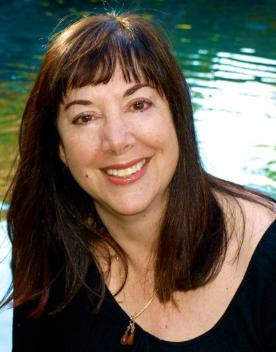
(Hispanic Artist from ROE: Lisa Loomer.)
The next show, I haven’t seen, but it runs until November 22 at Signature Theatre. CAKE OFF is directed by Joe Calarco (?-descent). I hope I’m able to get out to see this play that’s part of the Women’s Voices Theatre Festival. Joe Calarco is also Resident Director/Director of New Works at Signature Theatre- ie. one of the leaders helping make decisions at a huge company. That’s important.

(Latinx/Hispanic Artist from CAKE OFF: Joe Calarco.)
This next play also (along with QUEEN GIRL IN THE WORLD and BAD DOG) features costume design by Ivania Stack (Costa Rican-descent): Woolly Mammoth Theatre Company’s WOMEN LAUGHING ALONE WITH A SALAD. I’m so happy that Ivania is so popular. That’s so important! I want to also plug Ivania’s company dog & pony dc . Follow them on twitter, like them on facebook, go to their website. Ivania Stack is a Ring Leader at dog & pony, which I’m sure means she’s one of las mera meras (the main mains) of the company. Go to their shows! Support Latinx Leaders in DC Theatre!
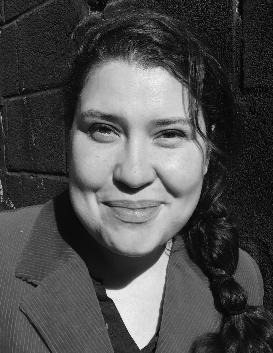
(Latinx Artist in WOMEN LAUGHING ALONE WITH A SALAD: Ivania Stack)
I was fortunate enough to catch Brittany Martz (Mexican-descent) in InterAct Story Theatre’s THE HERO OF EVERYTHING. This show was amazing- not just because of it’s artistic content but also because of it’s message. This show represented female empowerment and provided opportunities for diverse under-served youth to see themselves on stage.

(Latinx Artist in THE HERO OF EVERYTHING: Brittany Martz.)
Now, this next show, I’m a little on the fence talking about, simply because it has caused a lot of discomfort amongst some people I’ve spoken to about it. I’m talking about WSC Avant Bard’s FRIENDSHIP BETRAYED, an English translation of playwright María de Zayas y Sotomayor’s (Spanish-descent) LA TRAICIÓN EN LA AMISTAD. I was able to watch the show, and admired the language so much. I could hear de Zayas y Sotomayor’s words in my head in Spanish as the Avant Bard actors spoke in English. It was a fascinating experience. I will write more extensively about this show later and will provide a link here, so I won’t make too much of a statement on how I felt about this play. María de Zayas y Sotomayor is a fascinating playwright and because of this, I’m sure she’s been on GALA Hispanic Theatre and Teatro de la Luna’s radar for a long while. She’s been on my radar for years and I hope to one day have the space available to be able to study such an important literary figure in Hispanic Theatre History with my diverse communities.
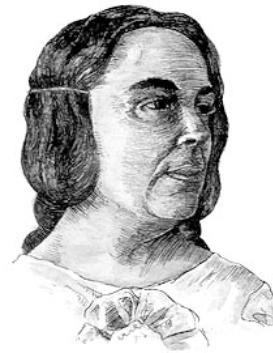
(Hispanic Artist in FRIENDSHIP BETRAYED: María de Zayas y Sotomayor)
Finally, there is one last Latina that must be recognized. The Kennedy Center Theatre Lab provided a discussion about intersectionality in the Women’s Voices Theatre Festival, called (ALL) WOMEN’S VOICES: A CONVERSATION ABOUT INTENTIONALITY AND INCLUSION. This conversation featured Paige Hernandez (Cuban-descent) as a performer and panelist. A friend of mine linked me to a video of this event after the fact, and I was so happy that it happened! Intersectionality is so important. I was so happy that Paige was able to represent for Latinas (and especially Afro-Latinas and Latinas of Color) in an Anglocentric theatre world for this conversation. Such a bummer she had to leave early, but she was working on Theatre J’s QUEEN GIRL IN THE WORLD, mentioned above. I’ve caught Paige in other works before and she was just amazing. ¡Adelante!

(Latinx Artist in (ALL) WOMEN’S VOICES: A CONVERSATION ABOUT INTENTIONALITY AND INCLUSION: Paige Hernandez)
These companies should be celebrated for their inclusion of Latinx artists into their productions and because they are taking motions to make our theatre community a better place. However, we should remember that it’s just 13 of 62 productions… which means 21% of shows performed during LAHM had at least 1 Latinx artists.Of those 62 only 3 of those shows had more than 5 Latinx artists in it: a teeny-weeny 5%. These numbers are important because they show that we have a long way to go.
It is also important to remember that racial inequality exists in Latin America and in the diaspora. It is evident by the Latinx artists featured in US media that White and Mestizx Latinx folks dominate the Latinx narrative, a privilege that can be very dangerous if gone unchecked. I don’t think it is 100% intentional, but at the same time, I think it should be addressed. There is diversity in DC Latinx artists and it’s obvious from the people featured in this article (look at those beautiful diverse Latinx faces!). We still need to do more to embrace Afro-Latinx and Indigenous-Latinx identities and cultures. Not to mention even discussing Asian-Latinx narratives. More diversity and inclusion can happen still.
I think something that needs to happen is that Latinx writers need to be cultivated. A local company should put out a program for local Latinx playwrights to develop their works to create a more inclusive community. I would love to be considered for a program like that. Somewhere I could work in community with other Latinx playwrights, to reshape the narratives of our diverse people. Only then can we really drive our community forward and truly become part of DC Theatre.
This season, there are 20 other shows that have been announced to be either written or directed by a Latinx or Hispanic artist, that I feel everyone should be aware of:
GALA Hispanic Theatre’s NUEVAS AVENTURAS DE DON QUIJOTE, based on the novel by Miguel de Cervantes Saavedra (Spanish-descent) Adaptation by Patricia Suárez (Argentine-descent) and directed by Cornelia Cody (?-descent) runs October 19 to 31
Constellation Theatre Company’s AVENUE Q with music and lyrics by Robert Lopez (Filipino-descent) [and Jeff Marx] runs October 22 to November 23.
Kennedy Center TYA’s ELEPHANT & PIGGIE’S WE ARE IN A PLAY! with music by Deborah Wicks La Puma (Mexican-descent) runs November 27 to January 3.
In Series’ BY GEORGE, BY IRA, BY GERSHWIN directed by Abel Lopez (?-descent) [and Reenie Codelka, Frank Conlon, and Angelisa Gillyard] runs November 29 to December 20.
GALA Hispanic Theatre’s EN LA USA ME QUEDE by Saulo García (Colombian-descent), directed by Valentin Alvarez-Campos (Cuban-descent) runs December 4 and 5.
Mosaic Theatre’s WRESTLING JERUSALEM directed by Michael John Garcés (Colombian-descent) runs January 6 to 24.
Kennedy Center TYA’s OLIVERio: A Brazilian Twist by Karen Zacarías (Mexican-descent) and music by Deborah Wicks La Puma (Mexican-descent) runs January 30 to February 21.
GALA Hispanic Theatre’s SEÑORITA Y MADAME: The Secret War of Elizabeth Arden and Helena Rubenstein By Gustavo Ott (Venezuelan-descent) directed by Conseulo Trum (Venezuelan-descent) runs February 4 to 28
In Series and The Washington Ballet’s Studio Company’s CARMEN IN HAVANA directed and choreographed by Septime Webre (Cuban-descent) and Carlos C. Rodríguez (Venezuelan-descent) [and David Palmer] runs February 5 to 7.
Olney Theatre Center’s CARMEN: AN AFRO-CUBAN JAZZ MUSICAL written and directed by Moisés Kaufman (Venezuelan-descent), and choreography by Sergio Trujillo (Colombian-descent), runs February 11 to March 6.
THE ANTIGONE PROJECT: A Play in 5 Parts by Caridad Svich (Cuban/Argentine/Spanish-descent) [and Tanya Barfield, Karen Hartman, Chioro Miyagawa, and Lynn Nottage] runs February 17 to March 6.
Signature Theatre’s THE FLICK directed by Joe Calarco (?-descent) runs March 1 to April 17
GALA Hispanic Theatre’s EL MUNDO ES UN PAÑUELO By Jorge Diaz (Chilean-descent) directed by Hugo Medrano (Argentine-descent) runs March 7 to 19
National Theatre’s JERSEY BOYS with choreography by Sergio Trujillo (Colombian-descent) runs April 6 to 24.
GALA Hispanic Theatre’s CRONICA DE UNA MUERTE ANUNCIADA/CHRONICLE OF A DEATH FORETOLD by Gabriel García Márquez (Colombian-descent), adapted by Jorge Ali Triana (Colombian-descent), and directed by José Zayas (Puerto Rican-descent) runs April 7 to May 8.
Imagination Stage’s LOOKING FOR ROBERTO CLEMENTE by Karen Zacarias (Mexican-descent), and music by Deborah Wicks La Puma (Mexican-descent) runs April 13 to May 22.
Theater J’s THE BODY OF AN AMERICAN directed by José Carrasquillo (Puerto Rican-descent) runs April 27 to May 29.
Folger Theatre’s DISTRICT MERCHANTS Directed by Michael John Garcés (Colombian-descent) runs May 31 to July 3.
GALA Hispanic Theatre’s EL PASO BLUE By Octavio Solis (Mexican-descent) directed by José Carrasquillo (Puerto Rican-descent) runs June 2 to 26.
Olney Theatre Company’s THE LITTLE MERMAID with choreography by Septime Webre (Cuban-descent) runs June 22 to August 14.
This may seem like a lot when written down, but it really isn’t when you begin comparing. I really don’t get why DC Theatre isn’t rushing to get Latinx playwrights and directors to do their thing…. I think it would be awesome if DC theatre companies could do at least 1 play per season by a Latinx playwright and with a Latinx director. Those Latinx artists can be of any race, but at least Latinx stories would be getting told. Latinx Audiences are part of the community too. DC theatre should be more inclusive of those audiences.
I will end this incredibly long blog post by saying that I’m so proud of all the people I listed in this post as well as all the other Latinx artists in DC Theatre I did not mention. Juntxs, nada nos puede vencer. Together, there’s nothing we can’t overcome.
¡Que vivan los Latinoamericanxs de Washington D.C.! ¡Que viva América!
1 note
·
View note
Photo

Avoiding Racism for Writers - Coffee, Honey and other Color Don’ts
Author Alex K Thorne (@mermaidandthedrunks) answers the question, “Why can’t I say that? It’s not offensive to compare someone to delicious chocolate!” and discusses how to avoid unintentional racism and harmful stereotypes in your writing:
[Read full article here]
No decent, thoughtful human being wants to be accused of racism. Most decent, thoughtful human beings are guilty of racism.
Of course, it’s usually unconscious, and it’s often hard to keep track of evolving language and social movements, of phrases in the vernacular that were perfectly acceptable ten years ago but are now taboo (and vice-versa).
As writers, albeit pros or fanfic writers, or everyone in between, we use our words as tools, as toys, and sometimes, as weapons. It’s our responsibility to listen to new conversations, to keep abreast of the ever-changing socio-political climate, and above all, to think before we ink.
There are some wonderfully evocative ways to describe people of color without being unintentionally racist or having to sacrifice your creative integrity.When writing about a character of colour (ESPECIALLY if you’re a white author), visit sites such as:
@writingwithcolor
@weareallmixedup
@thisisnotafrica
@thisisnotlatinx
5K notes
·
View notes
Note
Can Haitians be latinx? I've heard that they can be, but because their main language isn't Spanish and they get left out in Latino/a/x movements it's kind of hard to believe. (I'm haitian btw)
Neither I or Eon are Latinx.
I’ve seen post after post about this debate and I’m learning about ethnic identities aside from my own! Though we tend to post and discuss about POC along side Black Americans, You would have to discuss with Latinx and Haitian run blogs about this! May I suggest @thisisnotlatinx and um @latinaspeak @reclaimingthelatinatag
- Susie
22 notes
·
View notes
Note
holo ! por casualidad conocés páginas en instagram que sean sobre social issues peri latinxs? O mundiales, pero manejada por latinxs 💛💛💛 y si conocés acá en tumblr también!!!! o si alguien conoce... necesito más páginas así latinas para seguir
Realmente no uso ig, pero si alguien sabe, por favor comparta la info!!
De aqui conozco algunas, @thisisnotlatinx, @reclaimingthelatinatag, @misangremellama, @latinxpositivity, @latinaspeak y te tengo que recomendar a @dasakuryo que diariamente hace posts sobre esas cosas. Espero que te sirva! :) (si alguien sabe de otros tumblrs, díganos!)
2 notes
·
View notes
Note
hey guys! do you have any latinx blog recs?
@latinaspeak @angrylatinxsunited @reclaimingthelatinatag @misangremellama @thisisnotlatinx
Off the top of my head I can’t remember any more but anyone feel free to add to the list!
Mod A.
3 notes
·
View notes
Note
My family is from Honduras and on my mom's side she has afro latinx cousins,aunts, grandparents but she herself is very white passing and her siblings look brown but not like a typical afro latinx. I'm confused as to what to refer to myself since my little brother is afro latino passing and has more dominate genes from my moms side but I am not. Would I even count since I'm kinda fair skinned but my features would never allow me to pass for white person
@thisisnotlatinx might be more educated to help in this! I'm not really too knowledgeable about this I'm still in the learning process so I don't want to say anything and be wrong!
0 notes
Photo

Here’s a selfie in case you forgot what I look like! Meow! 💕✨☀️
#kawaiininjacat#kawaii game too strong#geeky girls#xingona#xicanx#effyourbeautystandards#Colorado#eyebrows on fleek#pansexual#educatedwoman#educated Latina#foureyes#rtlt#thisisnotlatinx#Thoughts
43 notes
·
View notes
Text
Exploring Identity through theatre: Yek Tunal Kuskatan & the Salvadoran identity
I’ve been performing for a large part of my life, and have been working as a professional actor (for voice overs, film, and theatre) in Washington, D.C. for several years. I’ve played various roles, many of which were stereotypes of brown or LGBTQIA+ people, and have overall been dissatisfied with the work available to me and my communities.
Some of the most satisfying work I’ve done has been working with youth audiences with topics on identity. In Seasons of Light with Smithsonian’s Discovery Theatre, I was able to explore my diverse background and share my cultures with hundreds of young people. The play dealt with holidays around the world that deal with darkness and light. I was able to explore my Sefardi heritage through the study of Hanukkah, my Native American heritage through the study of the Winter Solstice, and my Latinx heritage through the study of Las Posadas. In GALita and Wit’s End Puppets co-production Fábula Mayas/Maya Fables, I was able to explore my Central American Indigenous heritage through bilingual storytelling. I met so many young people with both of those projects; all of which impacted my desire to do this type work.

(Image: Tetsina Wittiwa/Zuni Winter Solstice in Seasons of Light.)

(Image: Xmucane & Xpiyacoc in Fábula Mayas/Maya Fables.) However, the piece I’ve worked on that hits closest to home is a play I wrote about Native American pride, El Salvador history, and Indigenous language revitalization. They play was born out of an emergency and I continue to work on it out of necessity for this type of work. We need plays about identity. We need plays about Native American people. We need plays about language revitalization. We need diverse plays and stories. This play has morphed quite a bit since it’s original incarnation, and will continue to grow the more I explore it. In this blog post, I will talk about my journey with my tri-lingual play for young audiences and how it can shaped the Salvadoran identity of nationals and the diaspora. Background on Native American Identity and Nawat language In Washington, D.C. (and across the United States) there is a misguided idea on what it means to be Salvadoran and Latinx. These ideas have often been perpetuated by Anglx people through discrimination and Latinx people through assimilation. The “Latino race” myth is heavily accepted as fact in many spaces, including arts circles, and Latinx theatre is often discussed through a homogenized lense; often a Mexican, Spanish, or Argentine position, more specifically through white, white-passing, and light-skin narratives. On occasion, African and Indigenous American identities are explored, but these are not as commonplace. Salvadoran identity is represented through war, gang violence, and undocumented migration. Though these aspects of Salvadoran history are legitimate and influence the Salvadoran identity, there is also so much more than that oversimplification. For accurate and positive representation, diverse community collaboration is required. It’s necessary for diverse artists to reclaim our identities from the mainstream art world.
I was born in a town called Mejicanos in the department of San Salvador in El Salvador, Central America. I migrated to the United States with my family when I was a young child. I’ve lived in the Northern Virginia area ever since. I enjoy languages. I studied American Sign Language in community college, and Nawat through Alan R. King’s independent study course. I am in no way tri-lingual, but I do have a life goal to be a polyglot and to aid in the revitalization of Native American languages.
When I began studying Nawat, I was both scared and excited. I was excited because I believe that heritage is so important, and language was part of that. I was also scared because I knew that if I got involved with Nawat revitalization circles, I would need to do my part as well. The responsibility scared me. It still does.
King’s Nawat course, and subsequently the “Salvaemos el idioma Nahuat” Facebook group, is available to everyone and anyone interested in helping revitalize this endangered language. The group strives to make visible the Elders who speak Nawat fluently and to inspire Salvadoran nationals and diaspora to remember our Native American heritage through language. There is also research on El Salvador history available online, particularly on Tim Lohrentz’s typepad.com page “The Indigenous History of El Salvador”.
Of course it is always best to get Indigenous history from Indigenous Elders and Leaders. I have been fortunate enough to develop relationships with some International Indigenous Salvadoran leaders, particularly Chief Leonel Chevez of the Maya-Lenca Nation, and Chief Margarito Esquino of ANIS (Asociación Nacional Indígena Salvadoreña), and have been able to learn more about my history through their teachings.
Phase 1: Timumachtikan Nawat In 2014, a friend of mine informed me of an arts opportunity available at the child care center he worked at. I contacted the center and was able schedule performances of a new work for youth audiences sometime in the summer. I wrote a play called The Cosmic Twins, based off of a story from the Popol Vuh, for six actors. Unfortunately, I wasn’t able to keep all six of my actors for rehearsals so I had to come up with an alternative.
I was already studying Nawat at the time and decided that I wanted to do something about El Salvador and about Native American heritage. I decided that my play would be a one-persyn show featuring seven different characters, including historical figures from El Salvador. I named the show Timumachtikan Nawat! which means let’s learn Nawat. The story taught El Salvador history and Nawat vocabulary with song. I rehearsed it, reviewed my taped rehearsals in order to direct myself better, constructed simple puppets and props, and finally performed it at my friend’s child care center and at other locations in Northern Virginia. I was happy with the work I had done but my aspirations extend much higher. I lacked the two things that I needed to ensure my play’s success: community and funding. Still, I knew that with time, my little one-persxn play could become a young audience success story.



(Images: Atakat, Jose Feliciano Ama, and President Salvador Sanchez Ceren in Timumachtikan Nawat!)
Building a Native American Theatre Community in Washington, D.C. After my second production of Maya Fables with GALita and Wit’s End Puppets,we received much expected backlash from some artists of color. The production was called out for the use of red-face and for discriminating against Native American womyn and youth.
As a response, Miguel Amaguaña (mopino432), myself and the rest of the ensemble organized an open community forum entitled “In the beginning the Earth was empty…” A dialogue on Maya Fables and Imagining a Decolonial TYA Community. Our hope with the forum was to show accountability for the violence we perpetuated with Maya Fables and to initiate conversation about proper representation of Native American people in DC theatre.

(Image: Instagram advertisement for the open community forum)
From this forum, the group DC Native American Theatre Artists/Artistas Indígena de Teatro de DC was formed. The group is “comprised of Native American Artists from ethnic groups across the American continent, who work in the Washington, D.C. Metropolitan Area” and the group “serves as a resource for Non-Native American Artists interested in collaborating with Native American Artists in the DC Metro Area”.
Phase 2: Yek Tunal Kuskatan With a new community behind me, I decided to begin working on my trilingual play again. I did two main rewrites: a 2-persyn show and then a 4-persyn show. I renamed the play Yek Tunal Kuskatan, which means ‘good day, El Salvador,” and I reached out to members of DC Native American Theatre Artists/Artistas Indígena de Teatro de DC to collaborate.
I remembered that a local company called Openstage features a monthly open mic for theatre new works, and decided to contact them to workshop Yek Tunal Kuskatan. We were able to book a workshop performance of a scene from the play.
With puppets borrowed from GALA Hispanic theatre and made by Wit’s End Puppets, we were able to bring two of Yek Tunal Kuskatan’s characters to life. We took ¡TUM TICA!: Una Historia de Musica y Familia’s Tito Puente and made Yek Tunal Kuskatan’s Abuela, and we took Fábula Mayas‘ Disobedient Child and made Yek Tunal Kuskatan’s Chepe. Simple costume changes created brand new identities for the gorgeous puppets.

(Images: puppets in their original costumes)
With dates set and puppets secured, Miguel Amaguaña, Tsaitami Duchicela (prettyherricane), and I began rehearsing the scene from Yek Tunal Kuskatan. The scene was originally for 4 actors, but since I was not able to secure a third puppet, I simply combined two roles into one.
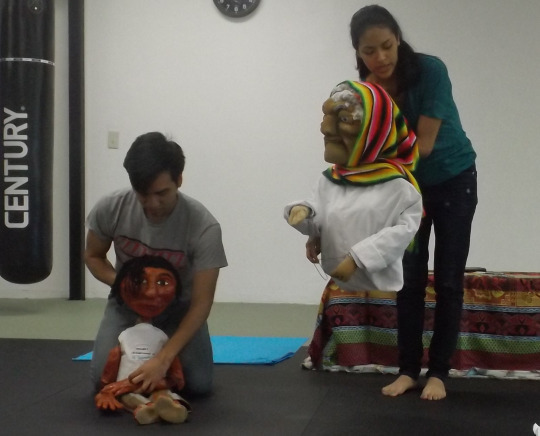



(Images: Yek Tunal Kuskatan rehearsals)
We used rehearsals to study El Salvador history, puppetry, and self-production for theatre. We took promotional shots for the workshop and began advertising on social media. Through this collaboration, we developed a preview I am very proud of.

(Image: Promotional material for Yek Tunal Kuskatan)
When the performance day finally arrived, we performed the workshop to a full house of an adult audience. I also shared the video of the performance with subtitles in Spanish with the “Salvemos el idioma Nahuat” group. Both audiences gave the performance excellent feedback. I was very satisfied with the progress the play had made since its’ first incarnation.
Phase 3: The Future I don’t want things to end there! I’ve been applying for grants so that I can get funding for a full stage production in Washington, D.C. I also, along with Alberto Cruz, a member of Colectivo Tzuntecun Ejecat, a group that works with Nahuat-speaking Elders from Santo Domingo de Guzman, applied for a transnational grant that would allow us to collaborate and take the story to El Salvador. Hopefully, with the help of arts organizations, my dream of providing opportunities for Native American artists and audiences in El Salvador and the diaspora can come true.
Because of my film background, another interest of mine would be to find funding for a film production of Yek Tunal Kuskatan. A film version would allow the story to reach a much larger audience, especially considering the people who need this story the most are not located in Washington, D.C. Puppetry for film is not only beautiful, but is increasing in popularity, now more than ever! Combining both mediums of entertainment could result in some really gorgeous and educational work. A DC theatre company that centers Native American Queer and Trans folx, Teatro de la Septima Generacion/Seventh Generation Theatre is growing; slowly but surely.
No matter what funding I do or do not get, I will continue to work on Yek Tunal Kuskatan because this work is much too important for me and my community. I really hope that theatre and the Diaspora could really benefit from this story. I know that it has really helped me be proud of my heritage and to inspire others to do the same.

#thisisnotlatinx#native american#native actors#native actress#indigenous languages#language revitalization#indigena#el salvador#nahuat#nawat#latinx#puppets#puppetry#TYA#theatre#DCTheatre#theatre for young audiences#young audiences#newplay#new works#guanacx#guanaca#guanaco#salvadoreña#salvadoreñx#raices#roots#heritage#culture#central america
1 note
·
View note
Text
Let's get this straight: Latin Latinx Hispanic Mexican and Spanish are not the same thing. Just because someone is part of one of these, doesn't mean that they belong to every category. Just because you use one of these terms a certain way doesn't make it true.
0 notes
Note
do you know of any accounts like yours that speak on mostly mexican and/or latinx issues?
thisisnotlatinx would be a blog to check out and wocinsolidarity has a blog list I believe. Followers feel free to suggest.Eon
31 notes
·
View notes
Photo

This tan tho ✨
16 notes
·
View notes
Photo

✌🏽✨💕✌🏽
#kawaiininjacat#kawaii game too strong#xingona#xicanx#effyourbeautystandards#kik#geeky girls#rtlt#thisisnotlatinx#nerdy chicana#pansexual#Thoughts#modern renaissance#mexican american#makeup game hella strong
16 notes
·
View notes
Note
According to someone i was speaking to BLM isn't for minorities who are also targeted by police only for the African American community. If thats true wouldnt there be another movement to speak up about what latnix or Hispanic community struggle through also?
Black Latinx's exist yes, but there are social movements for Latinx People!@thisisnotlatinx might have some great sources, google too!
32 notes
·
View notes
Text
Buenas!
Hello, everyone! This is a blog dedicated to latinxs made by latinxs as a way to discuss issues in our communities (revolving homophobia, religion, racism/anti-blackness, etc) and safe space for latinxs to connect as well as ask us questions out of their concern or curiosity. This blog is ran currently by 2 (soon 3) moderators, but we plan to open an application for more moderators in the near future!
Please promote us!
(¡Hola a todos! Este es un blog dedicado a latinxs hecha por latinxs como una forma de discutir temas en nuestras comunidades (como la homofobia, la religión, el racismo, etc) y un espacio seguro para latinxs para que se conecten, a darnos preguntas de su preocupación o curiosidad. Este blog está corriendo con 2 (pronto 3) moderadores, pero tenemos la intención de abrir una aplicación para más moderadores en el futuro cercano!
Por favor promocione nosotros!)
It is okay for non-latinxs to reblog this post!!! This is just a promotional post.
1K notes
·
View notes